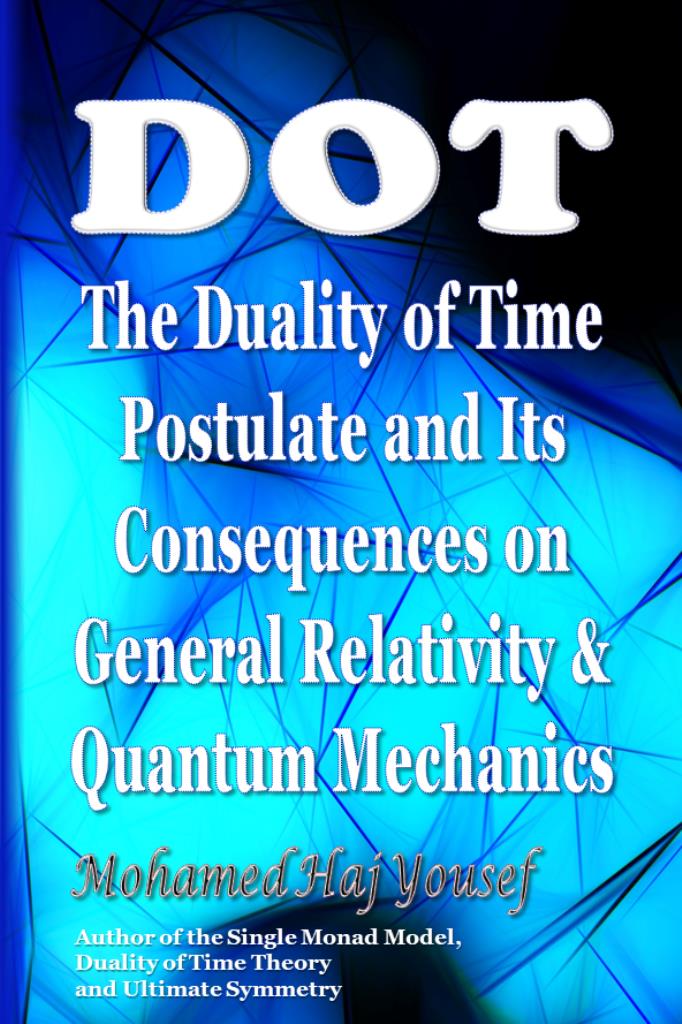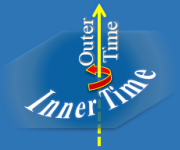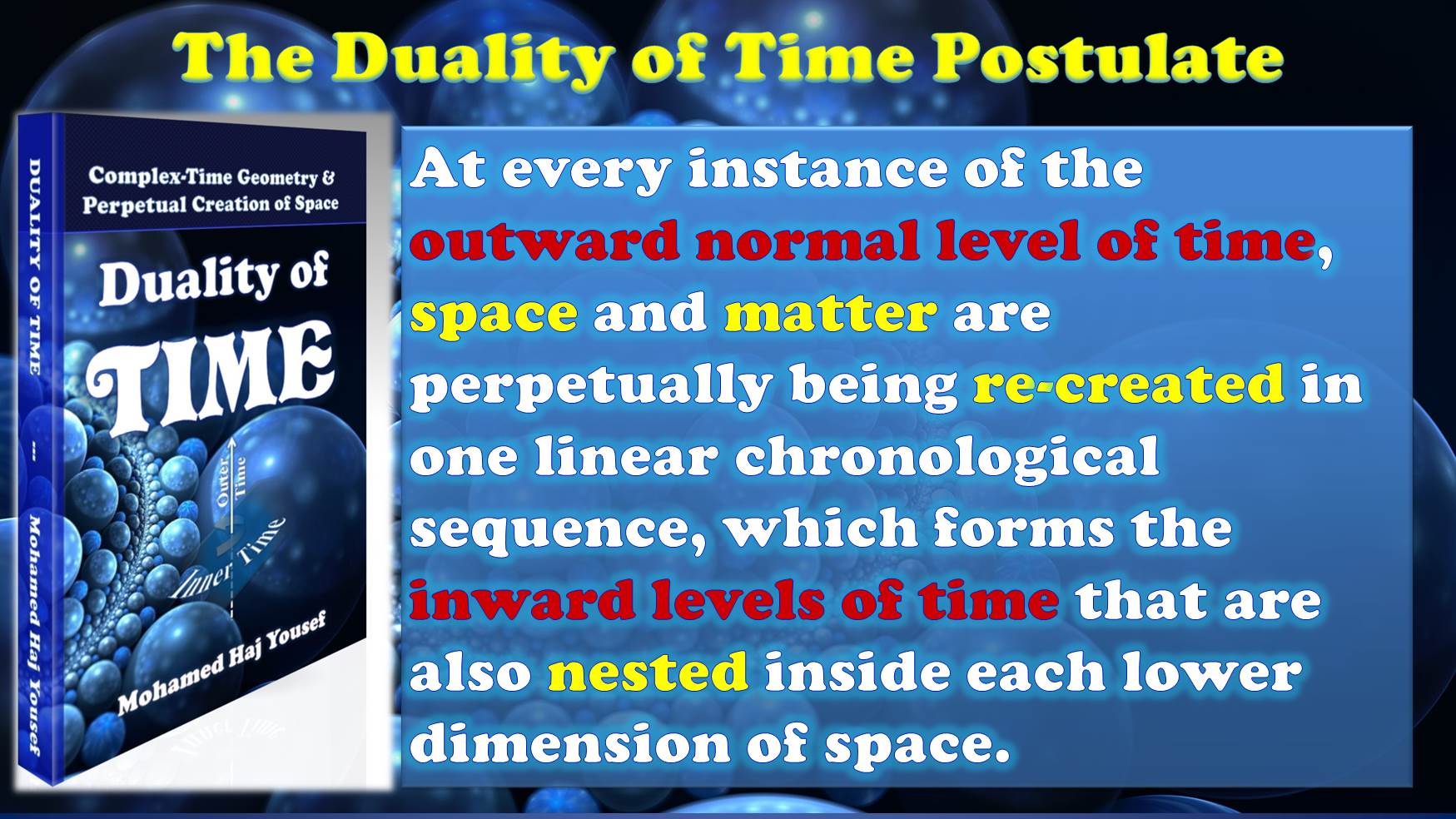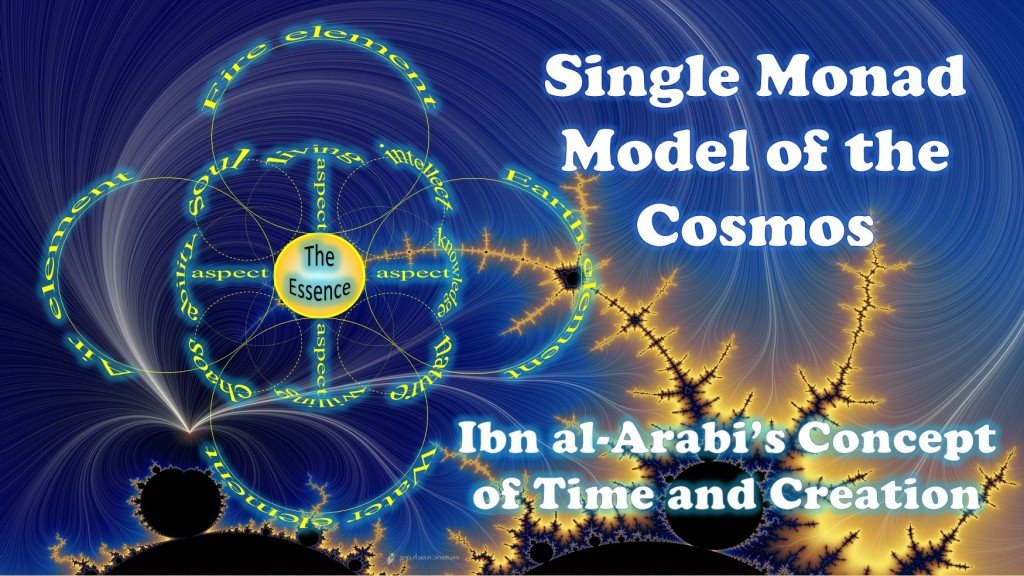DoT: The Duality of Time Postulate and Its Consequences on General Relativity and Quantum Mechanics

This short book presents a brief and concise exploration of the Duality of Time postulate and its consequences on General Relativity and Quantum Mechanics. To make it easier for citing, this book is presented in the form of a scientific paper, which will also make it more accessible and easier to be read by researchers who are interested in the astounding conclusions rather than any exhausting introductions which are provided in the previous books for more general readability.
READ THIS SHORT BOOK .....>>>>
The Duality of Time Postulate
STATES THAT:

At every instance of the
outward normal level of time, space and matter are perpetually being re-created in one chronological sequence, which forms the
inner levels of time that are also nested inside each lower dimension of space.
This means that at every instance of the real flow of time there is only one metaphysical point, that is the unit of space-time geometry, and the Universe is a result of its perpetual recurrence in the inner levels of time, which is continuously and perpetually re-creating
the dimensions of space and what it may contain of matter particle, which then kinetically evolve throughout the outer normal level of time that we encounter.
This Duality of Time Theory, that results from the Single Monad Model of the Cosmos, explains how multiplicity is emerging from absolute Oneness, at every instance of our normal time! This leads to the Ultimate Symmetry of space and its dynamic formation and breaking into the physical and psychical (supersymmetrical) creations, in orthogonal time directions.
General Relativity and Quantum Mechanics are complementary consequences of the Duality of Time Theory, and all the fundamental interactions become properties of the new granular complex-time geometry, in the inner dimesnions of time, just as gravity is a property of the outward three-dimensional geometry. - => Conference Talk [Detailed Presentation]

The Duality of Time does not contradict the established theories of General Relativity and Quantum Mechanics, but it exposes a deeper understanding of time that leads to the metaphysical (non-background) complex-time space, which is absolutely Euclidean, and which approximates to the non-Euclidean space when we suppose the background to be continuously existing with real physical dimensions. This approximation leads to General Relativity, and the current first and second quantization, of energy and fields, but Quantum Gravity requires this third quantization, that is the true quantization of the space-time itself, and this cannot be achieved without taking into account the hidden symmetry of the new granular complex-time geometry.
... uantization , that is the true quantization of the space-time itself , and this cannot be achieved without taking into account the hidden symmetry of the new granular complex-time geometry . ...
... nergy and fields, but Quantum Gravity requires this third quantization , that is the true quantization of the space-time itself , and this cannot be achieved without taking into account the HIDDEN SYMMETRY of the new granular complex-time geometry . ...
... that leads to the metaphysical ( non-background ) complex-time space, which is absolutely Euclidean , and which approximates to the non-Euclidean space when we suppose the background to be CONTINUOUSLY EXISTING with real physical dimensions. This approximation leads to General Relativity ...
... the inner levels of time, which is continuously and perpetually re-creating the dimensions of space and what it may contain of matter particle, which then kinetically evolve throughout the OUTER NORMAL level of time that we encounter. This Duality of Time Theory , that results from the Si ...
... ult of its perpetual recurrence in the inner levels of time, which is continuously and perpetually re-creating the dimensions of space and what it may contain of matter particle, which then KINETICALLY EVOLVE throughout the outer normal level of time that we encounter. This Duality of Time ...
... ical ( non-background ) complex-time space, which is absolutely Euclidean , and which approximates to the non-Euclidean space when we suppose the background to be continuously existing with REAL PHYSICAL dimensions. This approximation leads to General Relativity , and the current first and ...
... ch will also make it more accessible and easier to be read by researchers who are interested in the astounding conclusions rather than any exhausting introductions which are provided in the PREVIOUS BOOK s for more general readability. READ THIS SHORT BOOK .....>>>> The Duality ...
... -time space, which is absolutely Euclidean , and which approximates to the non-Euclidean space when we suppose the background to be continuously existing with real physical dimensions. This APPROXIMATION LEAD s to General Relativity , and the current first and second quantization, of energy ...
... ons. This approximation leads to General Relativity , and the current first and second quantization, of energy and fields, but Quantum Gravity requires this third quantization , that is the TRUE QUANTIZATION of the space-time itself , and this cannot be achieved without taking into account ...
... to be continuously existing with real physical dimensions. This approximation leads to General Relativity , and the current first and second quantization, of energy and fields, but Quantum Gravity requires this third quantization , that is the true quantization of the space-time itself , ...
... -time space, which is absolutely Euclidean , and which approximates to the non-Euclidean space when we suppose the background to be continuously existing with real physical dimensions. This APPROXIMATION LEADS to General Relativity , and the current first and second quantization, of energy ...
... stablished theories of General Relativity and Quantum Mechanics, but it exposes a deeper understanding of time that leads to the metaphysical ( non-background ) complex-time space, which is absolutely Euclidean , and which approximates to the non-Euclidean space when we suppose the backgro ...











